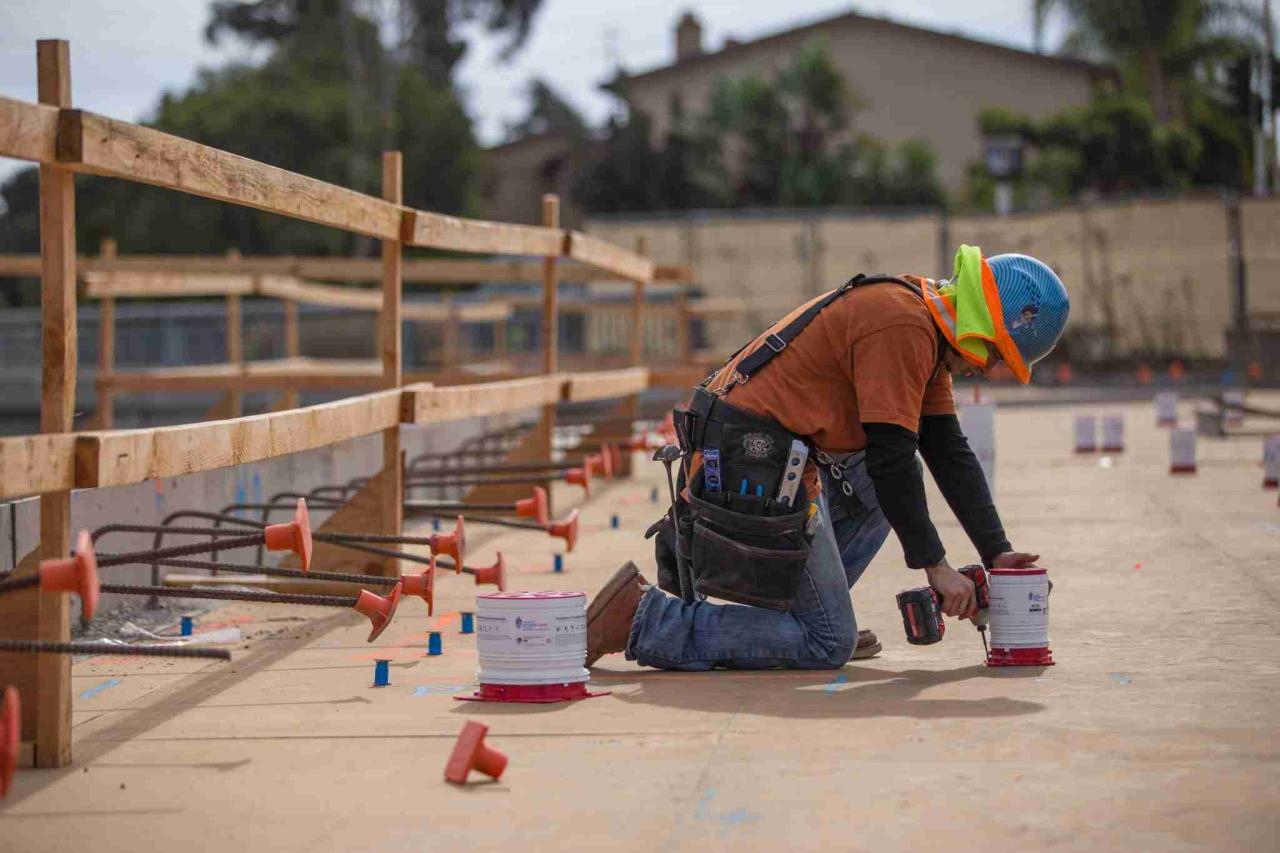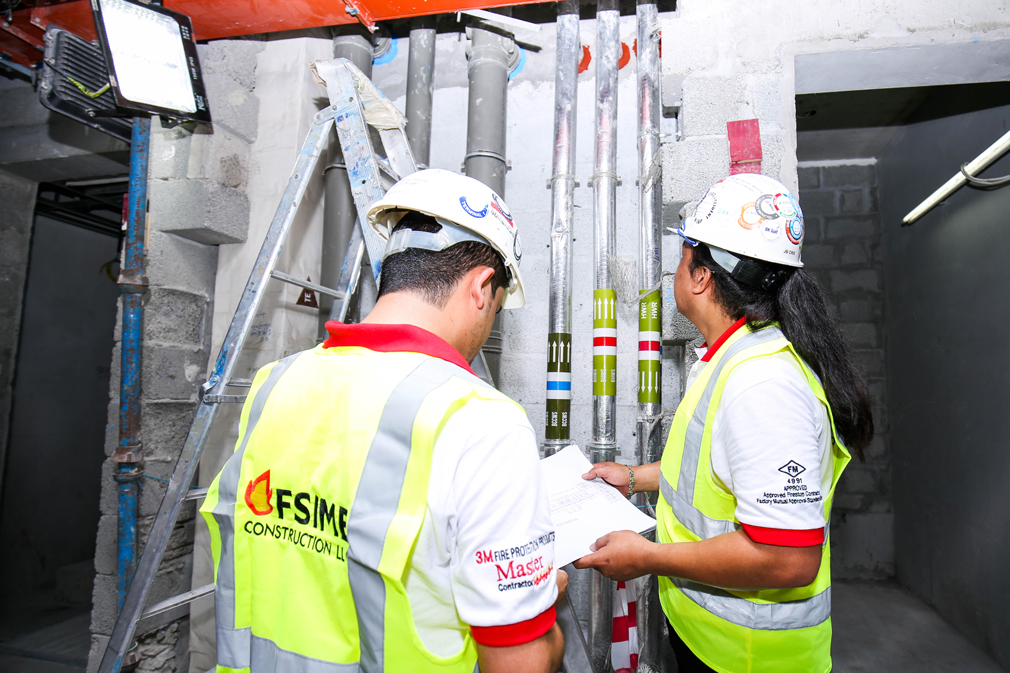Firestop Technologies: Protecting Buildings from Fire
Firestop technologies are crucial components of modern building safety, safeguarding lives and property by preventing the spread of fire. These technologies create barriers that limit the passage of flames, smoke, […]

Firestop technologies are crucial components of modern building safety, safeguarding lives and property by preventing the spread of fire. These technologies create barriers that limit the passage of flames, smoke, and hot gases, effectively containing a fire within a designated area.
From simple firestop seals around pipes and cables to complex fire-rated doors and walls, these systems play a vital role in fire safety. They are designed to withstand high temperatures, resist the spread of flames, and maintain structural integrity during a fire event.
Introduction to Firestop Technologies
Firestop technologies are crucial safety features in modern buildings, designed to prevent the spread of fire and smoke, safeguarding lives and property. These technologies are essential for creating fire-resistant barriers within buildings, allowing for safe evacuation and limiting damage caused by fire.
Importance of Firestop Technologies in Building Safety
Firestop technologies play a critical role in enhancing building safety by effectively compartmentalizing buildings and preventing the rapid spread of fire. This compartmentalization is achieved by creating fire-resistant barriers that contain flames and smoke within specific areas, delaying their spread to other parts of the building. This crucial delay provides valuable time for occupants to safely evacuate and for firefighters to effectively contain the fire.
Examples of Firestop Technologies
Firestop technologies are widely used in various construction applications to ensure fire safety. Here are some common examples:
- Firestop Sealants and Caulks: These materials are applied to seal gaps and penetrations in walls, floors, and ceilings, preventing the passage of flames and smoke. They are often used around pipes, conduits, and other building services.
- Firestop Panels and Boards: These pre-engineered panels and boards are installed to create fire-resistant barriers in walls, floors, and ceilings. They are typically made of materials like gypsum, mineral wool, or fire-resistant foam.
- Firestop Gaskets and Wraps: These flexible materials are used to seal around doors, windows, and other openings, preventing the spread of fire and smoke. They are commonly made from fire-resistant foam, intumescent materials, or other heat-resistant materials.
- Firestop Collars and Sleeves: These specialized components are designed to seal around pipes, conduits, and other building services that penetrate fire-rated walls and floors. They are often made from metal or fire-resistant plastic.
- Firestop Systems for Penetrations: These systems are designed to seal large penetrations in walls, floors, and ceilings, such as those created by cable trays, HVAC ducts, and other large building services. They typically consist of a combination of firestop panels, sealants, and other components.
Firestop Testing and Certification
Firestop testing and certification are crucial aspects of ensuring the effectiveness of firestop technologies in protecting life and property. These processes involve rigorous evaluations and independent verification to ensure that firestop systems meet the required performance standards.
Firestop Testing Methods
Firestop testing methods are designed to evaluate the fire resistance of firestop technologies under controlled conditions. These tests are conducted in accredited laboratories, using standardized procedures and equipment.
- Fire Resistance Tests: These tests involve exposing firestop systems to a controlled fire environment and measuring their ability to resist the passage of flames, heat, and smoke for a specified period. This test determines the fire resistance rating of the firestop system, which is typically expressed in hours. For example, a firestop system with a 2-hour fire resistance rating can withstand a fire for two hours without compromising the integrity of the fire barrier.
- Smoke Control Tests: These tests evaluate the effectiveness of firestop systems in preventing the spread of smoke. They involve exposing firestop systems to a controlled fire environment and measuring the amount of smoke that penetrates the fire barrier. This test is particularly important in areas where smoke can pose a significant hazard to life safety.
- Structural Integrity Tests: These tests assess the ability of firestop systems to maintain their structural integrity during a fire. They involve exposing firestop systems to a controlled fire environment and evaluating their ability to withstand the heat and pressure generated by the fire. This test is crucial for ensuring that firestop systems can effectively prevent the collapse of fire barriers.
Firestop Certifications and Standards
Firestop certifications and standards are essential for ensuring the quality and performance of firestop technologies. These standards provide a framework for evaluating the effectiveness of firestop systems and for verifying that they meet the required performance criteria.
- UL (Underwriters Laboratories): UL is a globally recognized independent safety science company that develops and publishes standards for a wide range of products, including firestop technologies. UL certification indicates that a firestop system has met the requirements of specific UL standards, demonstrating its ability to perform as intended.
- FM (Factory Mutual): FM is another leading independent safety science company that develops and publishes standards for firestop technologies. FM certification indicates that a firestop system has met the requirements of specific FM standards, demonstrating its ability to perform as intended.
- ASTM (American Society for Testing and Materials): ASTM is a global standards organization that develops and publishes standards for a wide range of materials and products, including firestop technologies. ASTM standards provide a framework for evaluating the performance of firestop systems and for ensuring their consistency and reliability.
Role of Independent Testing Laboratories
Independent testing laboratories play a crucial role in ensuring the effectiveness of firestop technologies. These laboratories are accredited by organizations such as UL and FM, ensuring that they meet rigorous standards for objectivity, accuracy, and reliability.
- Testing and Evaluation: Independent testing laboratories conduct rigorous firestop testing to evaluate the performance of firestop systems. These tests are conducted according to established standards and procedures, ensuring the accuracy and reliability of the results.
- Certification: Once a firestop system has successfully passed testing, independent testing laboratories issue certifications that confirm its compliance with specific standards. These certifications are essential for verifying the performance and effectiveness of firestop technologies.
- Objectivity and Impartiality: Independent testing laboratories are committed to objectivity and impartiality in their evaluations. They are not affiliated with firestop manufacturers, ensuring that their testing results are unbiased and reliable.
Emerging Trends in Firestop Technologies

The firestop industry is continuously evolving, driven by advancements in materials science, construction techniques, and regulatory requirements. New technologies and materials are emerging, offering improved fire resistance, ease of installation, and sustainability. These innovations are transforming the way firestop systems are designed, installed, and evaluated, ultimately enhancing building safety and resilience.
Impact of Technological Advancements
Technological advancements have a profound impact on firestop performance and installation. The use of innovative materials and manufacturing processes has led to the development of firestop systems with enhanced fire resistance, improved thermal insulation, and reduced weight. For example, the use of intumescent materials, which expand significantly under heat, has enabled the creation of firestop systems that effectively seal gaps and openings in fire-rated assemblies. Similarly, advancements in composite materials have resulted in firestop systems that are lighter, stronger, and more durable.
- Improved Fire Resistance: The use of intumescent materials and composite materials has led to the development of firestop systems with enhanced fire resistance, effectively sealing gaps and openings in fire-rated assemblies.
- Enhanced Thermal Insulation: Innovative materials, such as aerogel and vacuum insulation panels, offer improved thermal insulation properties, reducing heat transfer and contributing to energy efficiency.
- Simplified Installation: Pre-engineered firestop systems, modular components, and innovative installation techniques have simplified the installation process, reducing labor costs and improving accuracy.
- Increased Sustainability: The use of recycled materials, bio-based materials, and sustainable manufacturing practices promotes environmental responsibility and reduces the carbon footprint of firestop systems.
Future of Firestop Technologies
The future of firestop technologies is promising, with ongoing research and development focused on enhancing performance, sustainability, and ease of installation. Future trends include the development of:
- Smart Firestop Systems: Integration of sensors and monitoring technologies to provide real-time data on firestop performance and detect potential fire hazards.
- Self-Healing Firestop Materials: Materials that can automatically seal gaps and openings in fire-rated assemblies in response to heat or damage, providing enhanced fire resistance and reducing maintenance requirements.
- Bio-Based Firestop Materials: Development of firestop systems using sustainable and renewable materials, such as hemp, flax, and bamboo, reducing reliance on traditional materials with high environmental impact.
Last Point

Firestop technologies are a testament to the ongoing evolution of building safety. As we continue to develop new materials and techniques, we can expect even more effective and efficient firestop systems that contribute to safer and more resilient buildings. By understanding the principles and applications of firestop technologies, we can ensure the safety of occupants and protect our valuable structures from the devastating effects of fire.
Firestop technologies are crucial for ensuring the safety of buildings, preventing the spread of fire and smoke. These technologies are constantly evolving, with companies like Renew Technologies leading the way in innovation. Renew Technologies specializes in developing sustainable and effective firestop solutions, contributing to the overall advancement of fire safety standards.




